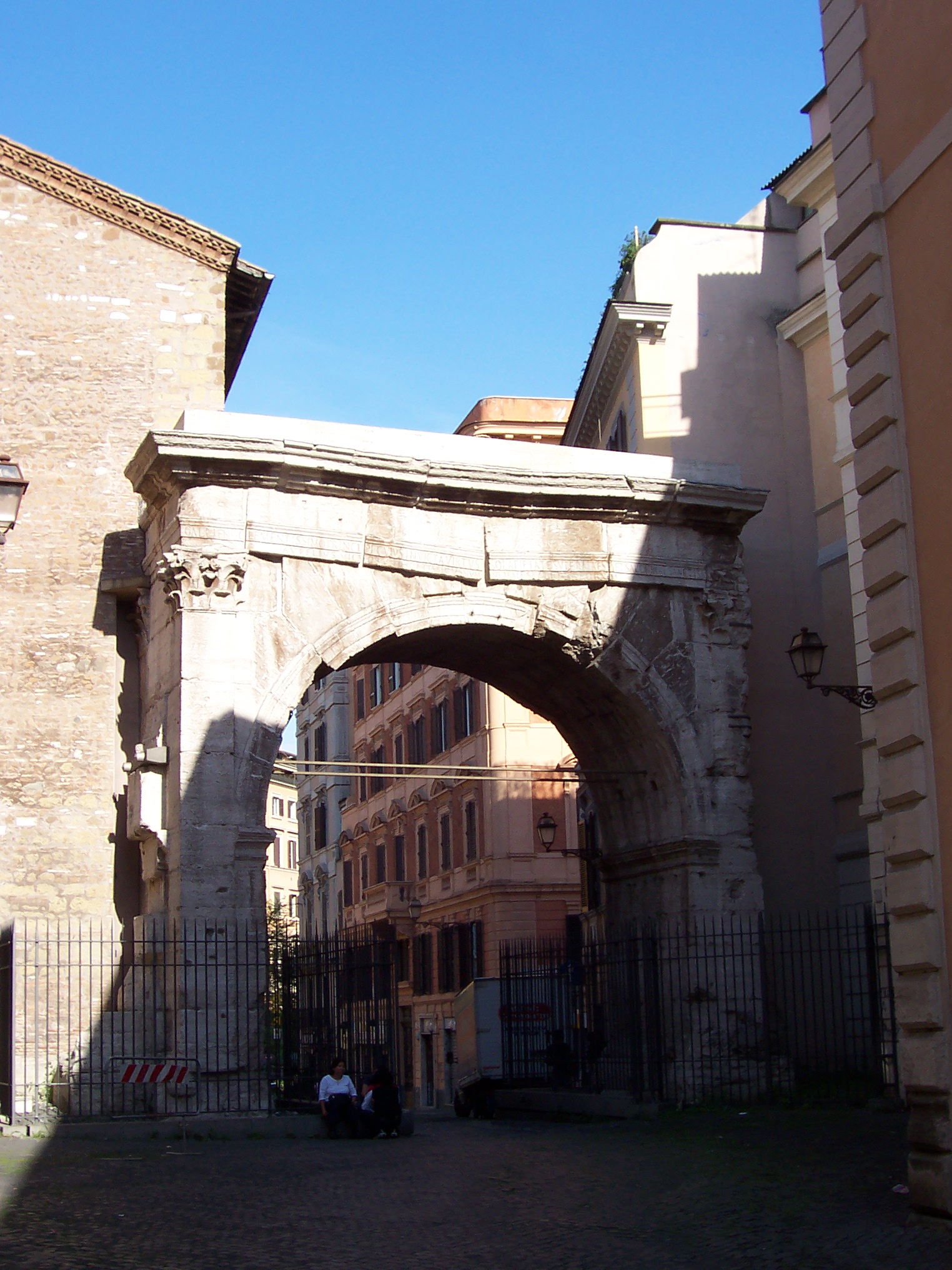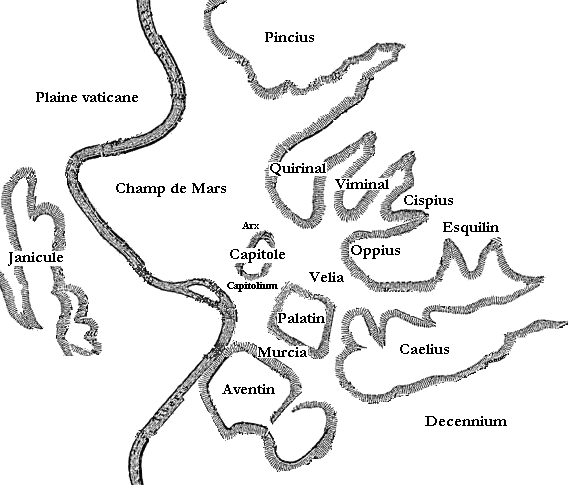|
Murus Terreus
The Murus Terreus Carinarum is an obscure earthwork fortification of the ancient city of Rome known from a passage in the works of Varro. The Murus Terreus may have been a part of Rome's earliest fortifications, often referred to as the Servian Wall. While the location of the ''Murus Terreus'' remains unknown and debated, it is thought likely that it belonged to the fortifications of the Oppian Hill, thus placing it between the Carinae and the Subura The Suburra, or ''Subura'' (unknown etymology), was a vast and populous neighborhood of Ancient Rome, located below the '' Murus Terreus'' on the ''Carinae'' and stretching on the slopes of the Quirinal and Viminal hills up to the offshoots of th .... Pinza suggested that the works were located on the summit of the Oppian.Pinza ''Bullettino della Commissione Archeologica Comunale di Roma'' 1898:93; 1912:86-7. References {{coord missing, Italy Walls of Rome ... [...More Info...] [...Related Items...] OR: [Wikipedia] [Google] [Baidu] |
Ancient Rome
In modern historiography, ancient Rome refers to Roman civilisation from the founding of the city of Rome in the 8th century BC to the collapse of the Western Roman Empire in the 5th century AD. It encompasses the Roman Kingdom (753–509 BC), Roman Republic (509–27 BC) and Roman Empire (27 BC–476 AD) until the fall of the western empire. Ancient Rome began as an Italic settlement, traditionally dated to 753 BC, beside the River Tiber in the Italian Peninsula. The settlement grew into the city and polity of Rome, and came to control its neighbours through a combination of treaties and military strength. It eventually dominated the Italian Peninsula, assimilated the Greek culture of southern Italy ( Magna Grecia) and the Etruscan culture and acquired an Empire that took in much of Europe and the lands and peoples surrounding the Mediterranean Sea. It was among the largest empires in the ancient world, with an estimated 50 to 90 million inhabitants, roughly 20% of t ... [...More Info...] [...Related Items...] OR: [Wikipedia] [Google] [Baidu] |
Varro
Marcus Terentius Varro (; 116–27 BC) was a Roman polymath and a prolific author. He is regarded as ancient Rome's greatest scholar, and was described by Petrarch as "the third great light of Rome" (after Vergil and Cicero). He is sometimes called Varro Reatinus to distinguish him from his younger contemporary Varro Atacinus. Biography Varro was born in or near Reate (now Rieti) to a family thought to be of equestrian rank, and always remained close to his roots in the area, owning a large farm in the Reatine plain, reported as near Lago di Ripasottile, until his old age. He supported Pompey, reaching the office of praetor, after having been tribune of the people, ''quaestor'' and ''curule aedile''. It is probable that Varro was discontented with the course on which Pompey entered when the First Triumvirate was formed, and he may thus have lost his chance of rising to the consulate. He actually ridiculed the coalition in a work entitled the ''Three-Headed Monster'' ( in th ... [...More Info...] [...Related Items...] OR: [Wikipedia] [Google] [Baidu] |
Servian Wall
The Servian Wall ( la, Murus Servii Tullii; it, Mura Serviane) was an ancient Roman defensive barrier constructed around the city of Rome in the early 4th century BC. The wall was built of volcanic tuff and was up to in height in places, wide at its base, long, and is believed to have had 16 main gates, of which only one or two have survived, and enclosed a total area of . In the 3rd century AD it was superseded by the construction of the larger Aurelian Walls as the city of Rome grew beyond the boundary of the Servian Wall. History The wall is named after the sixth Roman King, Servius Tullius. The literary tradition stating that there was some type of defensive wall or earthen works that encircled the city of Rome dating to the 6th century BC has been found to be false. The main extent of the Servian Wall was built in the early 4th century, during what is known as the Roman Republic. Construction The Servian Wall was originally built from large blocks of Cappellaccio tuff ... [...More Info...] [...Related Items...] OR: [Wikipedia] [Google] [Baidu] |
Oppian Hill
The Oppian Hill (Latin, ''Oppius Mons''; it, Colle Oppio) is the southern spur of the Esquiline Hill, one of the Seven hills of Rome, Italy. It is separated from the Cispius on the north by the valley of the Suburra, and from the Caelian Hill on the south by the valley of the Colosseum. The Oppius and the Cispius together form the Esquiline plateau just inside the line of the Servian Wall. In the divisions of the Septimontium (seven hills) Fagutal appears as an independent locality, which implies that originally "Oppius" was strictly applied to this spur except the western end. The northern tip of this western end was also called Carinae, which extended between the Velian Hill and the Clivus Pullius, looked out to the southwest (across the swamps of the Palus Ceroliae towards the Aventine), incorporated the Fagutal and was one of ancient Rome's most exclusive neighborhoods. At least for religious purposes the name Oppius continued in use to the end of the Roman Republic; n ... [...More Info...] [...Related Items...] OR: [Wikipedia] [Google] [Baidu] |
Carinae
''Carinae'' was an area of ancient Rome. It was one of its most exclusive neighborhoods, where many of the senatorial class lived. Florus described the ''Carinae'' as the "''most celebrated part of the city''" (''celeberrima pars urbis''). Description The ''Carinae'' occupied the western end of the southern spur of the Esquiline hill in Rome. The district likely incorporated the earlier Fagutal, with the northern tip of the Oppian Hill on its western side; it extended between the Velian Hill and the ''Clivus Pullius''. Its outlook was southwestern, across the swamps of the ''Palus Ceroliae'' toward the Aventine. The slopes of the neighborhood near the Velia were crossed by the ''vicus Cyprius'', where, according to a Roman tradition taken up by Livy, Tullia would have killed his father Servius Tullius, overwhelming him with her chariot pulled by horses. The same passage from Livy indicates the existence of a temple dedicated to Diana in the ''Carinae''. The ''Murus Terreus ... [...More Info...] [...Related Items...] OR: [Wikipedia] [Google] [Baidu] |
Suburra
The Suburra, or ''Subura'' (unknown etymology), was a vast and populous neighborhood of Ancient Rome, located below the ''Murus Terreus'' on the '' Carinae'' and stretching on the slopes of the Quirinal and Viminal hills up to the offshoots of the Esquiline (Oppian, Cispian and Fagutal hills). Since the lower part of the neighborhood - although overlooking an area of monuments and public services - was home to urban underclass who lived in miserable conditions, as well as a pleasure district, the term ''suburra'' has remained in the Italian language with the generic meaning of "disreputable place", "place of ill repute" or similar. Julius Caesar lived in a family home (''domus'') in the Suburra until, in 63 BC, he was elected '' pontifex maximus'' at the age of 37, as the Suburra had grown up around the property many years before his birth. The poet Martial also lived there. History The Suburra was originally part of the so-called ''Septimontium'', an area of the city associat ... [...More Info...] [...Related Items...] OR: [Wikipedia] [Google] [Baidu] |




